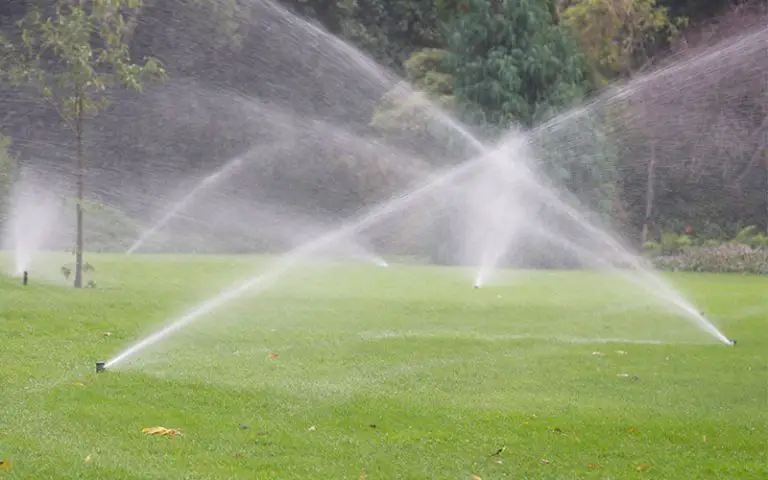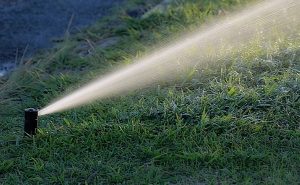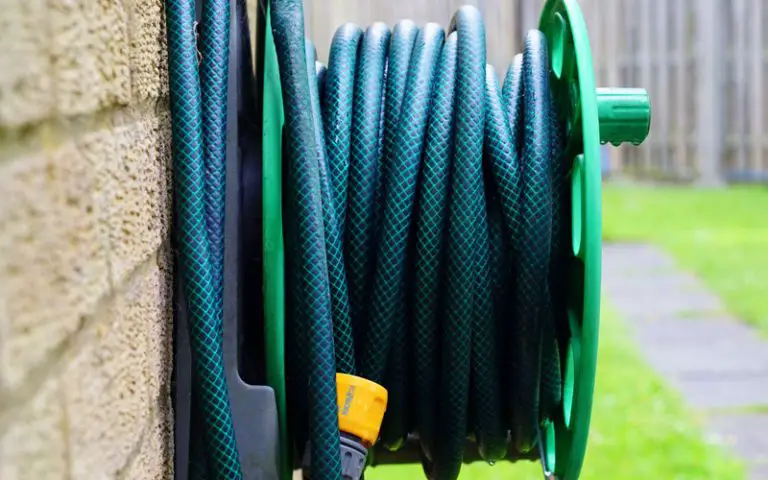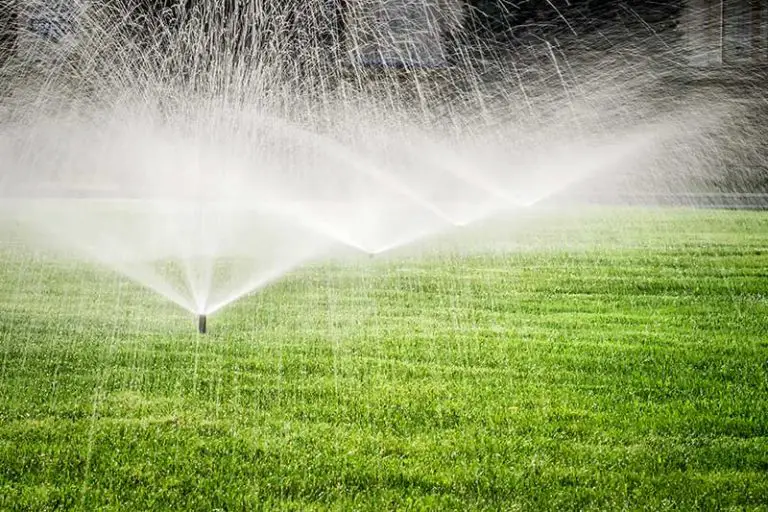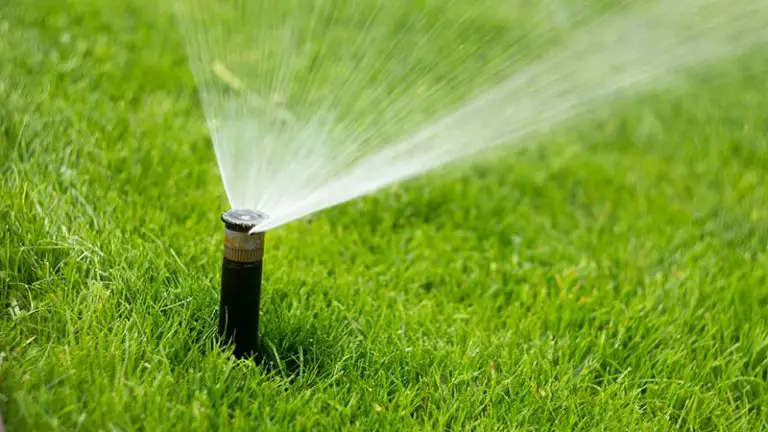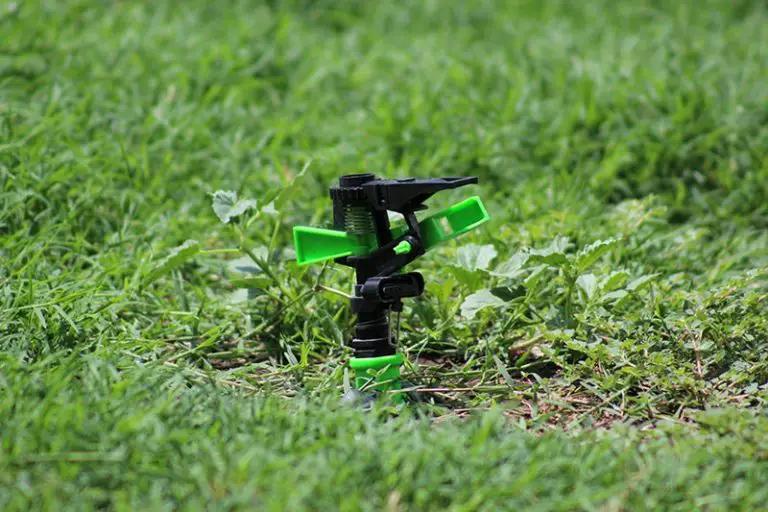How to Increase Water Pressure for Sprinklers
A lack of water pressure can affect your sprinkler’s performance and lead to negative effects involving your lawn and garden. Low water pressure can decrease the amount of water that your sprinkler produces, and hinder the reach of the water as well, leading to both pooling and unwatered grass.
There are plenty of ways in which water pressure can be increased, and knowing the cause of the issue will lead you to a suitable solution. This could include monitoring the output from your system and making amendments based on that, or ensuring that all valves which lead to it are opened fully. There are several ways in which to troubleshoot the issues that could be causing low water pressure in your sprinklers.
Why do Sprinklers Need Pressure?
Certain types of sprinklers work better when water pressure is high. This can be to ensure movement of the sprinkler, such as the case with oscillating and travelling sprinklers, or to ensure that the full breadth of the lawn can be reached.
What can Affect Sprinkler Water Pressure?
As there are multiple components of a sprinkler system, there are multiple areas in which pressure may be getting lost or compromised. Any area of a sprinkler system can affect water pressure if it is damaged or not functioning correctly, but water pressure can also be changed due to your home’s water pressure, so finding the exact source of the problem may require some trial and error.
Most pressure issues pertaining to sprinklers involve a fault in the valve, whether it be superficial or physical damage to the valve.
How to Test Sprinkler Water Pressure
Being able to test the water pressure from various systems will make troubleshooting a lot easier.
Pressure per square inch (PSI) can be measured fairly easily using a measuring tool. Pressure testers are usually cheap and easy to find online, and can help determine the pressure of the water that is coming through your faucet. This is a good way to check if the issue is coming from the direct source, and can rule out an issue with the faucet fairly effortlessly. This tool can be used on many different outlets, to check each of their pressures.
Checking the Faucet
The first point of call when testing the pressure of a sprinkler should be to test the outdoor faucet to which it is attached. When testing the outdoor faucet, you should also run a test by turning an indoor sink on to test whether the system can handle multiple outlets being run at the same time.
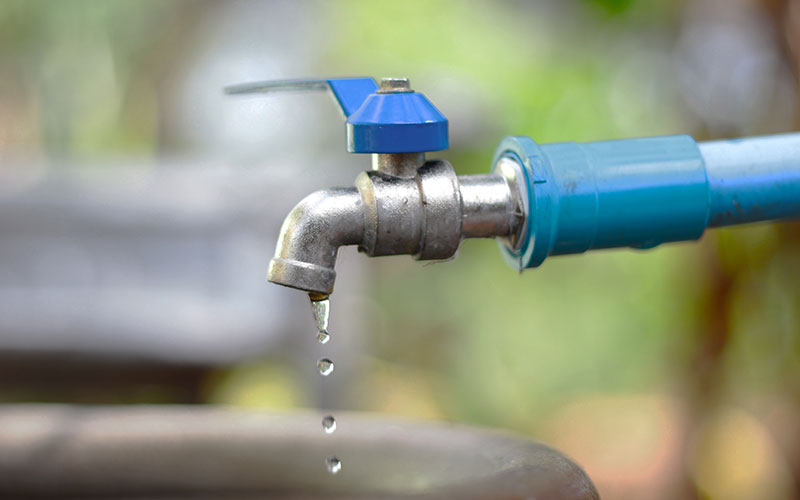
Checking the Hose
The hose and sprinkler adapter could also be responsible for a loss of water pressure. Low pressure from a garden hose may suggest that it’s kinked or damaged in some way. Luckily, issues with garden hoses are often easily fixed.
Checking the Sprinklers
The sprinkler heads may show physical signs that they are not working as they are supposed to. This will be more apparent if only one or two heads aren’t working. Sprinklers may appear blocked, damaged or be leaking. If the damage isn’t apparent above ground, it could be an issue with the sprinkler’s piping beneath ground.
Checking the Main Indoor Valves
The main indoor valves are usually located underneath sinks. These valves can be adjusted and are sometimes left partially closed by previous occupants or contractors. If you find you’re having pressure issues despite these valves being fully open, then the issue may be due to a leak or damage to the house’s water pipes.
Your Water Pressure Regulator
Your water pressure regulator could be located outside or inside. Every house should have one located somewhere, and they offer a definitive idea as to whether any water pressure issues are due to a fault with your house’s water pressure or not. Water pressure regulators should show your pressure PSI, and anything below 30 suggests that something may be amiss. If your water pressure is registering as very low on your regulator, it’s advised to call a plumber in order to manually increase it.
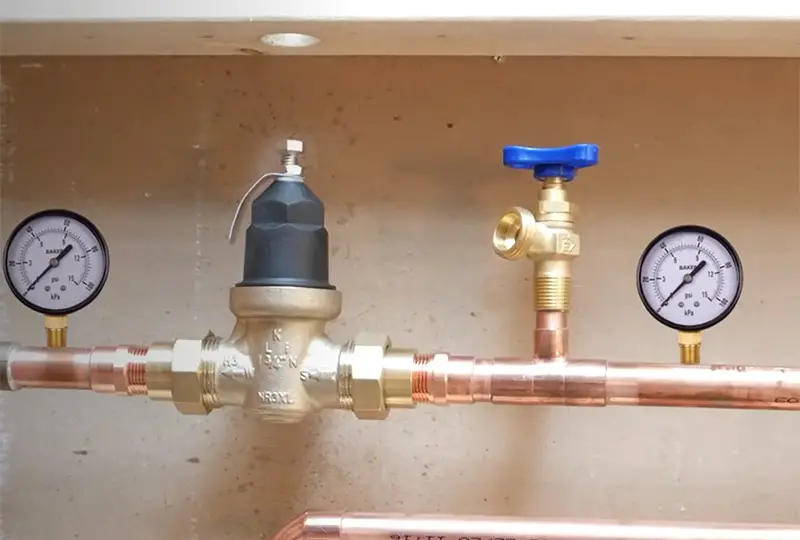
Mainline Repairs
If your mainline pipes are being replaced or fixed due to an issue, it could lead to pressure issues elsewhere on your waterline. Sometimes, households that will be affected by repairs will get a notice or warning to let them know of any disruptions, but when experiencing issues with water pressure that seems to have no obvious cause, it may be worth phoning up to find out whether repairs are taking place and affecting supply and pressure.
Mainline Supply
Your mainline pipes can supply plenty of homes, businesses and establishments. If you find that your water pressure drops quite frequently at certain times of the day, it could be due to the demand that surrounding buildings put on the mainline supply. Whilst there isn’t a great deal you can do about this, you can make some adjustments to the timing of your sprinklers if the pressure is better at other times of the day.
Why Do My Sprinklers Have Low Water Pressure?
There are various reasons why your sprinklers may be experiencing low water pressure. If you’ve ruled out the possibility of the water entering the sprinklers being low pressure, then the issue most likely lies within the sprinklers themselves.
The Water Line
Perhaps one of the worst-case scenarios is that of a water line leak or break. The water line is often located underground and connects the sprinkler heads to the water outlet. This could be very invasive to fix, as it requires removing and replacing a section of the water line.
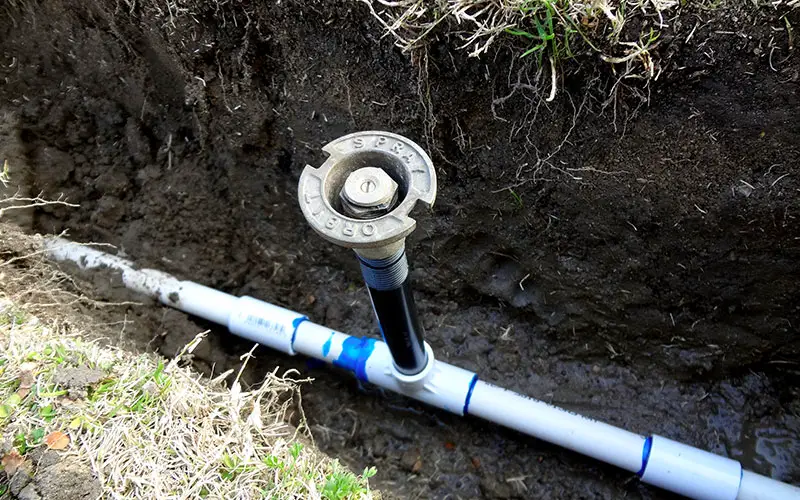
The water line can be broken fairly easily if anything is staked into the garden and penetrates one of the lines.
Oftentimes, the physical effects of a damaged or leaking water line can be seen above-ground. Things to look out for include recesses or dampness appearing in specific areas of grass. Having one failing sprinkler head could also suggest that the water line which it’s situated on may be broken, and water bubbling when it is being expelled from a sprinkler could also suggest that a break is allowing air into the water line.
Valve Issues
Perhaps the most likely cause of low water pressure affecting sprinklers, valve issues can range from a quick fix to a replacement needing to be installed. The various valves involved in a sprinkler system control water flow, pressure and speed. One of these valves not working as intended can lead to a loss in pressure or other issues.
Backflow Preventer Valve
The backflow preventer valve is located in the backflow preventer that is attached to your sprinkler system. This is often the cause for low water pressure in your sprinkler system, and is an easy fix. If your backflow preventer valves aren’t fully open, then opening them up fully should solve the issue. This issue can often be diagnosed by checking that the household water pressure is normal, whilst the sprinkler system’s pressure isn’t.
Main Water Valves and Shut Off Valves
The main valves and shut off valves, similarly to the backflow preventer valve, may not be performing as they should be as they aren’t fully open. The shut off valve typically attaches directly to your home’s water system, and if not fully open, may be the reason why the pressure to your sprinkler system is low. Your main water valves, as discussed earlier, are often located beneath sinks throughout the home. These may not be fully open due to previous occupants or contractors reducing the pressure to complete work done to the house. If any of these valves are partially closed, they could be responsible for your low pressure.
Clogged Sprinkler Heads
Another cause of low water pressure in sprinklers could be due to clogged or dirty sprinkler heads. Depending on the nature of the blockage, the issue can be fairly easy to fix.
The water pressure being decreased due to dirt or blockages in the sprinkler heads will be evident by how each head is affected. For instance, it’s unlikely that every sprinkler head will be blocked, and the ones that are will be likely producing water at different rates to each other as they won’t be blocked up the exact same way.
Professional companies often offer services for sprinkler head cleaning and inspection, but if the dirt is minimal, it can be cleaned fairly easily through normal cleaning methods.
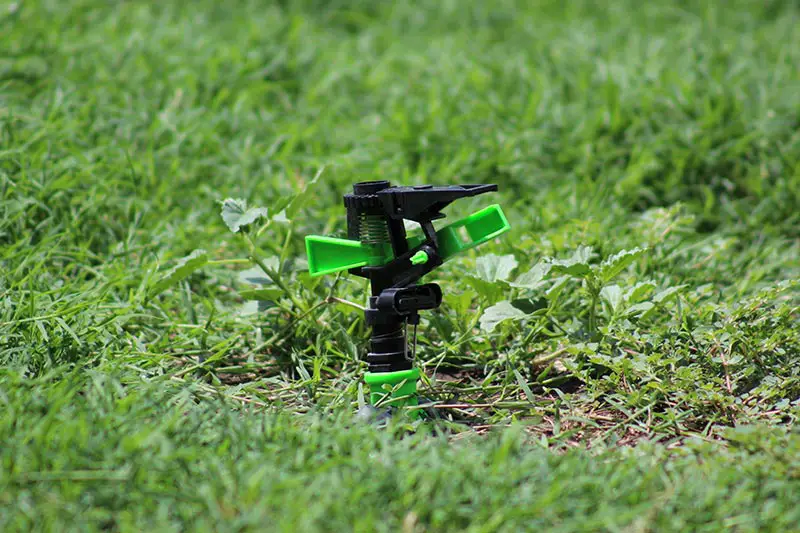
Clogged Water Line
A clogged water line is similar to that of a clogged sprinkler head, but harder to fix. Water lines can become blocked over time, or they can be obstructed by plant’s roots or dislodged soil. Clogged water lines should be fixed by a professional service provider, but, despite the process of fixing it being somewhat invasive, it’s an easy and quick fix.
Other Ways to Increase Water Pressure For Sprinklers
If the sprinkler system still doesn’t seem to be getting enough water, there are other ways you can increase the water flow to your sprinklers. Some of these options may not offer a complete fix for low water pressure, but they can supplement water supply.
Consider your Hose
The size of the hose which you use to transport water to your sprinkler system may be limiting the amount of water that is reaching it. Even if it doesn’t have kinks or any damage to it, the size and circumference of the hose can impact your sprinkler’s water supply.
Hose Bibb
Your hose bibb could be affecting your water supply. A full-sized bibb is approximately 3/4”, whilst a half-sized one is only 1/2”. It may seem like a small difference, but the larger size can vastly increase waterflow. Running a 3/4” hose through a 3/4” bibb is an easy way to increase waterflow.
Hose Splitters
Hose splitters are also capable of decreasing waterflow if their sizing is incorrect. Hose splitters are available in sizes as small as 5/8” and 3/8”, which will decrease water pressure once the water passes through. Ideally, you should aim to purchase splitters that have a 3/4” opening and closing, to ensure that there’s no loss of pressure.
Splitting Your Sprinklers Up
Different areas of your garden are likely to have different water pressure. This is due to the way the water has to move around an irrigation system, the areas further away are less likely to achieve the same levels of pressure as the ones closest to the source. Changing your sprinkler type in areas with low pressure can see effectiveness improved. For instance, using a head that performs well without needing the same levels of pressure as your other heads may be a solution.
Booster Pumps
Booster pumps can be installed once every other complication has been ruled out. They’re used to artificially boost pressure to your sprinkler system, enabling your system to perform at its best. When considering a booster pump, you need to consider your home’s pressure PSI, your sprinklers pressure PSI requirements, and the amount of sprinkler heads included in your sprinkler system. If there are issues present with any of these individual parts, a booster pump may not be the best solution.
Final Thoughts
High water pressure is almost necessary when you own an irrigation system. Sprinklers perform better with high water pressure due to the height and strength of the spray that they need to achieve to remain effective. If your water pressure is low, there are several ways you can troubleshoot the issue, and ways in which you can remedy the issue if not fixed completely.

